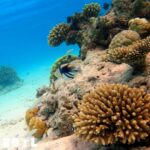
ERP Portugal encourages local councils to recycle electrical and electronic waste
The Local Councils that gather the highest amount of Waste Electrical and Electronic Equipment (WEEE) and Battery Waste will be rewarded. “Junta na Freguesia” (“Gather
We didn't find any happenings mapped to your criteria.
Try the traditional search to find articles not yet mapped with RUA.
We didn't find any happenings mapped to your criteria.
Try the traditional search to find articles not yet mapped with RUA.
We didn't find any happenings mapped to your criteria.
Try the traditional search to find articles not yet mapped with RUA.
We didn't find any happenings mapped to your criteria.
Try the traditional search to find articles not yet mapped with RUA.
The study reveals that from all the trash found in the Arctic over five years, 80% was plastics, much of it coming from fishing activity.
A study coordinated by the Alfred Wegener Institute, which was named “Citizen Science,” collected and analyzed plastic wrecks littering the beaches of Svalbard between 2016 and 2021. The results showed that the origins of the waste are from diverse sites, but come mainly from industrialized countries. During these 5 years, 23,000 fragments with a combined weight of 1620 kilograms were collected.
The project relies on citizens visiting the Svalbard archipelago, the nearest inhabited place to the North Pole, popular for its Arctic landscapes and polar wildlife. The idea for the project came from researcher Melanie Bergmann and guide and writer Birgit Lutz who, together with visitors, investigate the composition of the plastic pieces coming from the Arctic waters.
The study reveals that from all the trash found, 80% was plastics. Most of the items can be classified as waste from fishing activity, but it is difficult to identify their origin. Only about 1% still had recognizable markings, which showed that they came mainly from Russia and Norway, Arctic countries.
The wrecks and microplastics are transported to the Arctic Ocean from the Atlantic, Pacific, and North Sea via diffent rivers and currents, so they can come from many places. The researchers found waste originating from distant areas such as Brazil, China, and the United States, but plastics from Europe accounted for a third of the total, especially from Germany (8%). These figures do not surprise researchers, since they rank this country as the European champion in terms of both plastic production and waste export.
The institute also made a comparison of the new data with old data and concluded that the ocean shows much more waste accumulated on the shores of the Arctic, making it almost a final sewer. This poses additional challenges for an area that is already largely suffering from the effects of climate change, given that the Arctic is warming four times more than the global average.
In view of the results, Melanie Bergmann concludes that industrialized countries, which could have better waste management systems, contribute significantly to the pollution of remote ecosystems. It also states that it is necessary to improve waste management locally and massively reduce the global production of plastics.
These are conclusions that highlight, once again, the urgent need for a UN treaty on plastics, as advocated by the researchers involved in the study, and for it to be binding.


The Local Councils that gather the highest amount of Waste Electrical and Electronic Equipment (WEEE) and Battery Waste will be rewarded. “Junta na Freguesia” (“Gather

Vegan restaurants are on the rise around the world. Lisbon is in a good position, but let’s find out the other cities in the ranking.

The Oceans Treaty signed on Sunday will allow the conservation of 30 percent of the high seas by 2030. The moment is historic. The United

This article addresses an action that promotes the adoption of urgent measures to fight climate change and its impacts. SDG 13 also aims to improve education on climate change mitigation and impact reduction.
 To discover businesses that are actively working to contribute to this Sustainable Development Goal, click here.
To discover businesses that are actively working to contribute to this Sustainable Development Goal, click here. To read news, interviews or tips related to this Goal, click here.
To read news, interviews or tips related to this Goal, click here.Esta publicação também está disponível em:
![]() Português (Portuguese (Portugal))
Português (Portuguese (Portugal))

